How it is beneficial and healthy if you use fresh or domestic tomato paste instead of canned one. It is accepted that tinned tomato paste is more harmful in comparison with a domestic one. The most important reason for this claim is that in the industrial one there are many preservatives and additives in industrial products.
Why You Should Make Use of Tomato Paste, a Basic Ingredient in Mediterranean Cuisine
Tomato paste was a weird ingredient that kept cropping up in my mother’s stories about her grandmother’s and her own cooking, and it was one that I found particularly interesting. I never understood why people would use all of this fresh stuff and then add something that was canned with tomatoes.
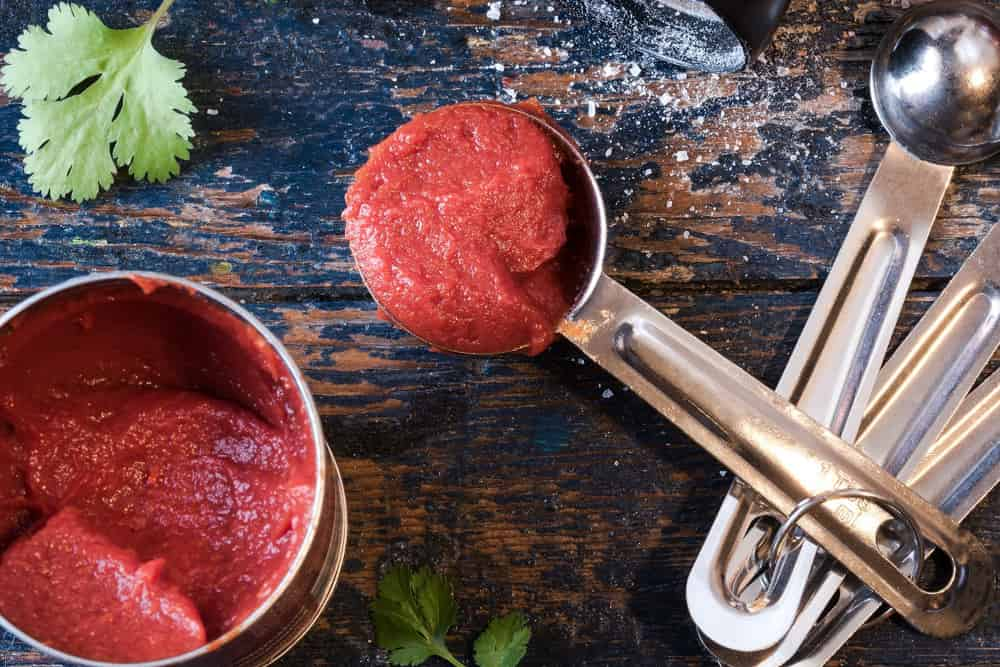
It was used as a substitute for fresh tomatoes in the days when they weren’t readily accessible, thus it did have a purpose back then.
To preserve tomatoes throughout the year, people started making their own homemade tomato paste. Given the importance of tomatoes to the cuisine of the Mediterranean, it stands to reason that Italy was the first country in the region to introduce tomato paste into its cooking before spreading its use to other Mediterranean countries.
My mother recalls that when she was a little child living in Greece in the 1950s, she would accompany her mother to the local deli and purchase one to two tablespoons of the product on a piece of wax paper so that her mother could use it in the kitchen. In what ways did they make use of it?
They were the ones who invented the famous “red ones,” also known as kokkinista. Because tomatoes or tomato paste are used in the preparation of these dishes, the name relates to the reddish hue of the finished product. First, the tomato paste and olive oil are brought up to temperature (almost to the point where they are sautéed), and then the vegetables or meat are added and cooked. It goes without saying that you’ll use it in sauces and pasta, but you’ll also use it pretty much any time you want to add some color or flavor.
Nowadays, tomatoes are available all year round (though they don’t always taste great), so why not use canned tomatoes instead? According to my mother, utilizing the paste really imparts a distinct flavor that you simply cannot obtain from using fresh or canned tomatoes. Why not, then? Tomato paste offers a wealth of nutritional advantages.
Essentially, strained, cooked tomatoes are what makeup tomato paste. According to studies, processed tomato products like tomato paste have increased levels of lycopene, an antioxidant well-known for preventing several cancers and enhancing skin health.
However, tomato paste is not what I would classify as a processed product (in the negative sense), as it is simply tomatoes that have been roasted and strained, with the occasional addition of salt (no preservatives or sugar).
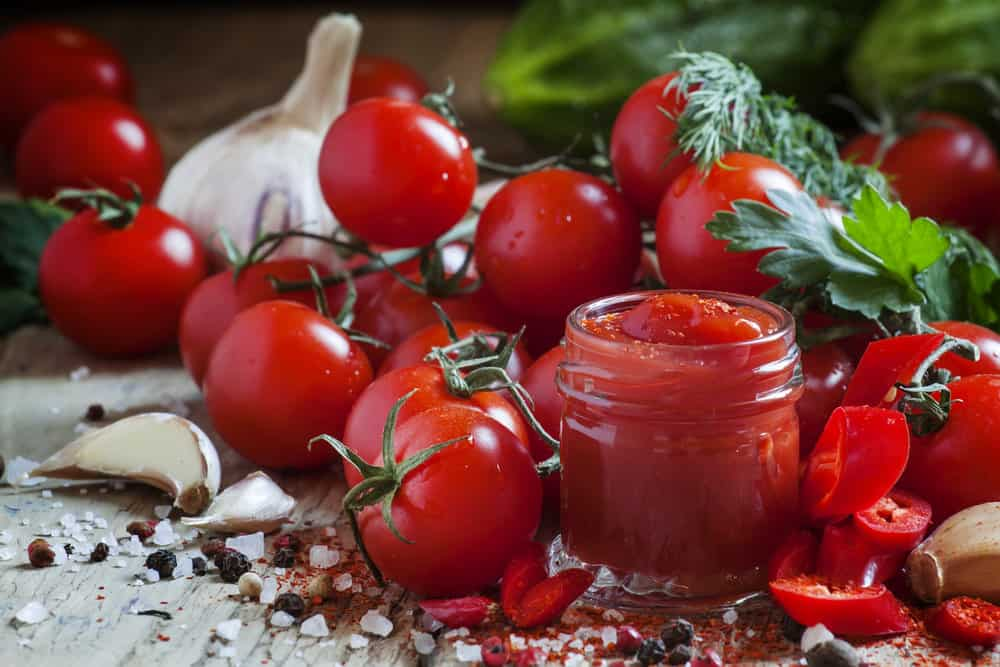
Additionally, when adding olive oil, as is typical in Greek cooking, you not only get healthy monounsaturated fats and antioxidants from the oil, but the fat also makes it easier for the tomato’s antioxidants to be absorbed. Additionally, if you cook with tomato paste, the antioxidant activity is increased when the paste is heated with olive oil.
A Snack Now
The “poor” kids, according to my mother, would receive a big slice of bread spread with tomato paste, drizzled with olive oil, and topped with oregano. This delicious snack was packed with antioxidants from tomato paste, olive oil, and oregano as well as healthy fats. The wealthy youngsters would also receive a slice of bread, but theirs would be topped with butter and sugar because those items were more expensive and only those with money could afford them.
Ironic considering how much healthier the snack of the impoverished child was than the snack of the wealthier child. Whether I’m rich or poor, I enjoy that snack that my mom used to make for us and call “pizza”: bread coated with olive oil and tomato paste, sprinkled with oregano and some shredded cheese, and baked for 5 minutes.
Therefore, the next time you see a recipe that calls for tomato paste, don’t feel bad about using it. Just make sure the tomato paste you use is made solely from tomatoes and possibly a little salt.
What are tomato paste’s health advantages?
Whether you frequently make meals from scratch or not, tomato paste is a useful pantry staple you should have on hand. Its nutritional value is comparable to that of fresh tomatoes because it is simply tomatoes in concentrated form. A spoonful of tomato paste contains 3 to 6 percent of your daily required intake of iron, potassium, and B vitamins and is a strong source of antioxidants.
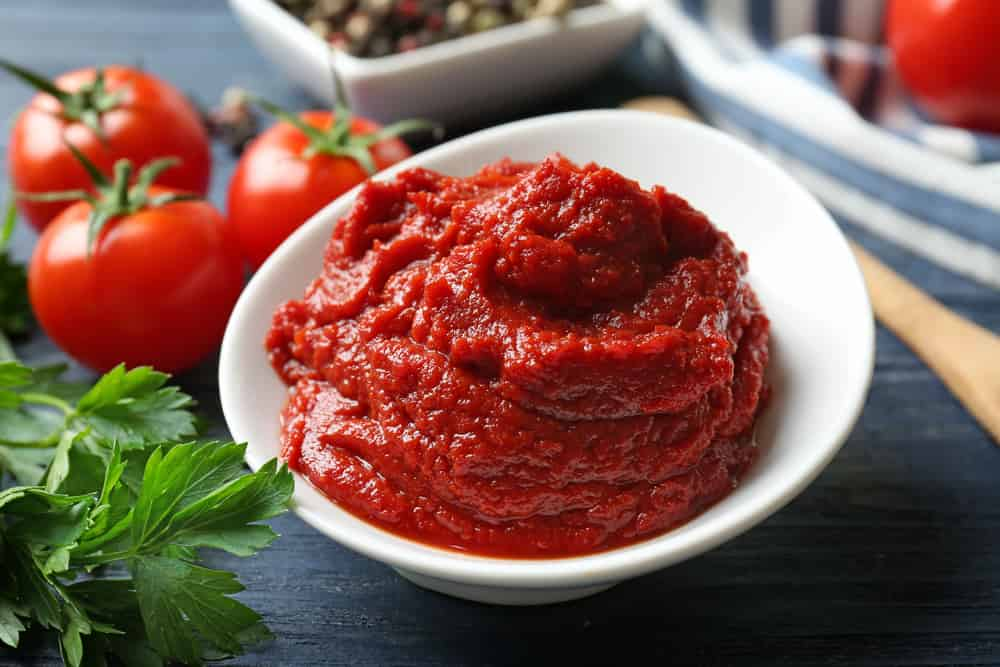
Basics
Fresh tomatoes are simmered until they start to break down to make tomato paste. The skin and seeds are then removed, and they are roasted for at least a few hours until their moisture is gone and they have turned into a thick paste. Normal seasonings include salt and olive oil, but some commercial items also include extra seasonings and sweeteners such as high fructose corn syrup.
There is enough tomato paste in one 6-ounce can make a pot of chili or stew that serves six people, or one ounce per serving. The nutritional information is given for 1 tablespoon, or around half of that quantity.
Lycopene
The finest natural source of lycopene, a potent antioxidant that is a member of the vitamin A family, is tomatoes. Although research has yielded conflicting findings, it frequently makes headlines for its ability to prevent prostate cancer, according to a review published in November 2011 in the “Cochrane Database of Systematic Reviews.” According to a study that appeared in the journal “Neurology October “‘s 2012 issue, men who consumed more lycopene had a decreased risk of strokes.
Lycopene consumption guidelines have not been defined, although consuming 4 to 8 mg daily is likely sufficient to have positive health effects. The amount of lycopene in 1 tablespoon of tomato paste is 4.6 milligrams.
C vitamin
The antioxidant vitamin C is well known for producing neurotransmitters and collagen, which sustain your skin and ligaments. Its antioxidant properties shield your body from free radical damage, including protecting the proteins and fats in your brain from oxidative damage.
Your skin’s vitamin C content protects it from sun exposure’s negative effects. Women only need 75 milligrams of vitamin C daily, compared to 90 mg for men. For pregnant women, the recommended daily consumption rises to 80 milligrams. Smokers require an additional 35 mg every day. The amount of vitamin C in one tablespoon of tomato paste is 3.5 milligrams.
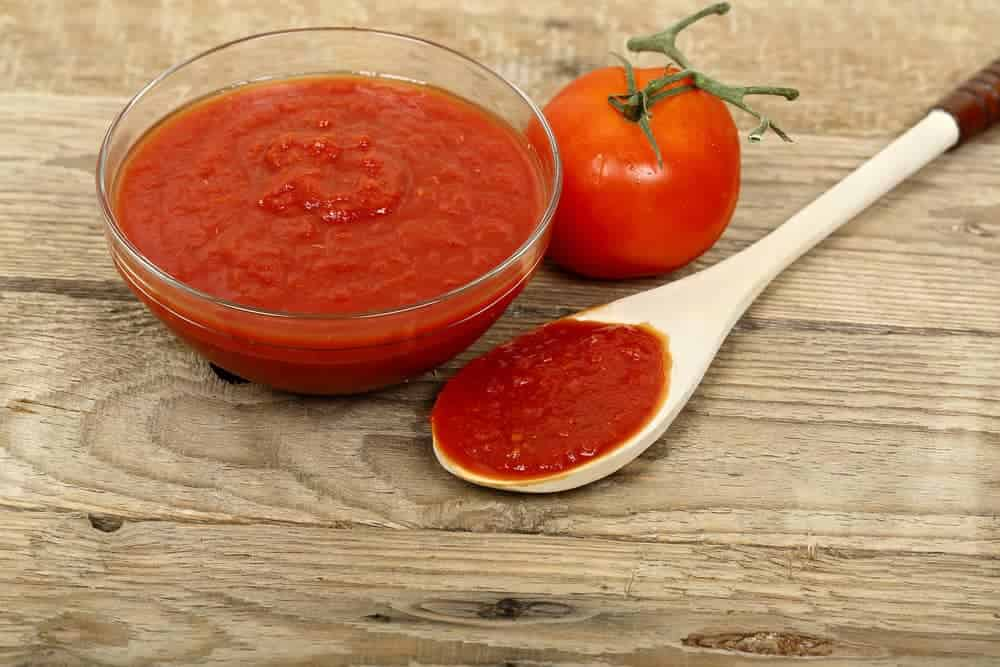
Serving Advice
Blend the canned tomatoes’ juice or the liquids from the meal you’re creating with water, broth, and tomato paste. It can be used to make a simple tomato sauce in a rush, but without flavors like garlic, onion, paprika, and oregano, it will taste bland. Chili, stews, and soups benefit from the use of tomato paste as a basis.
For a hearty vegetable soup, try combining tomato paste, vegetable broth, onions, corn, white beans, green beans, and seasonings. Garlic, shredded carrots, diced tomatoes, low-sodium chicken broth, and tomato paste are combined to make a topping for baked chicken.
5 reasons not to use canned tomato paste in cooking Nigerians have been obliged to utilize tomato paste more frequently as a result of rising food prices, which includes tomatoes. This is because we can’t really make many meals without making our beloved tomato stew. In general, Nigerians like to eat meals that include red stew cooked from tomatoes.
The usage of tomato paste comes with potential health risks. The packaging is primarily to blame for this. Because of the packaging that tomato paste is sold in, Nigerians have come to refer to it as “Tin tomato.” Only a few brands provide their products in sachets.
Using tomato paste is about equivalent to purchasing fresh tomatoes and producing your own pastes. However, they change in composition when they are put into tins and cans. The linings of cans and the majority of plastic objects are coated with the hazardous chemical Bisphenol-A, which is the reason for this. This substance has the potential to contaminate food and endanger your health.
- A hormonal imbalance If bisphenol-A leaks into the tomato paste that will be used in cooking, it may affect human hormones. We are typically in danger as a result of how long tomato paste is kept in tins or cans coated with this dangerous toxin.
- Miscarriage risk Without boring you with the details of this dangerous chemical’s chemistry, you run the risk of miscarriage if tomato paste contained in cans lined with it dissolves in your body and leaks into the bloodstream.
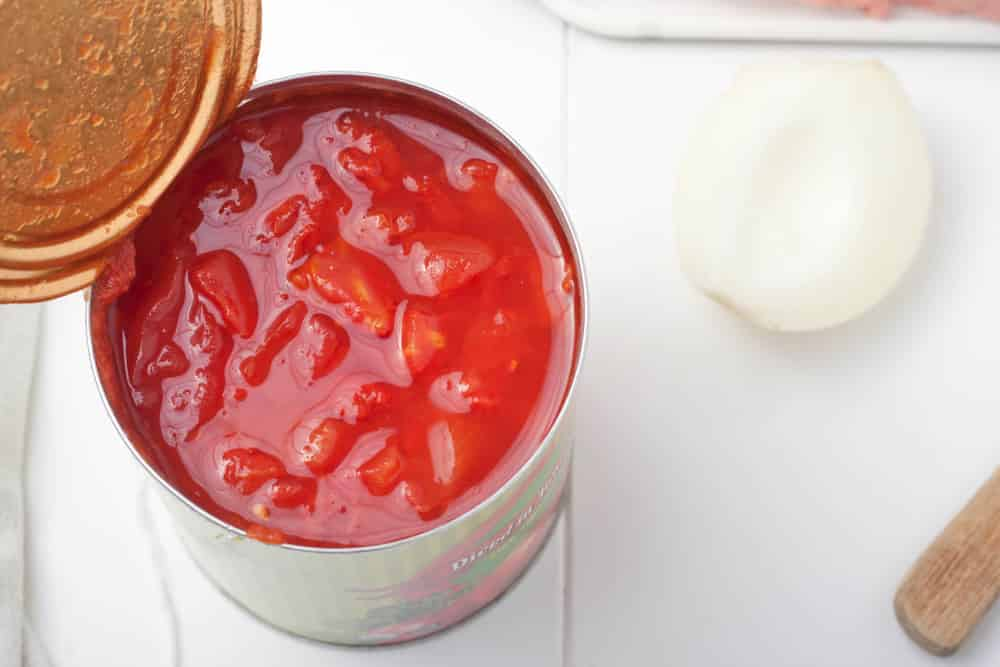
Because tomatoes are quite acidic, tomato pastes are being singled out from all other items that could be packaged into cans and containers. They have a greater capacity for absorbing the chemical Bisphenol-A from the tin coating into the food.
- Enhanced cancer risk Similar to any processed product that has been improperly stored in its packaging, some frequent consumers are more likely to get cancer. Consuming this product is not very healthy because the BPA chemical increases the risk of cancer and tomatoes are high offenders due to their high degree of acidity.
- Organ dysfunction in children Although the country’s dire economic conditions have compelled many households to improvise and use tomato paste more frequently, this may not seem like a healthy option for the kids, especially if the tomato pastes are in cans and tins. As a result, they run the risk of ingesting the chemical Bisphenol-A (BPA), which may cause some of their organs to malfunction. Additionally, prolonged exposure to this toxin, which may have gotten into the tomato paste used in cooking, may increase the chance of mental retardation in unborn children. This indicates that it is not a wise decision for expectant mothers
- Sperm issues
The chemical bisphenol-A has the capacity to impair male sperm growth. This indicates that prolonged exposure to this compound through the consumption of tin tomatoes might decrease male fertility. BPA harms stem cells by imitating the effects of estrogen.

Having said that, we recognize that tomato paste is currently a necessary ingredient and that not everyone would be able to cook without it.
To be cautious, one should use canned tomato paste sparingly. Instead, you might use fresh tomatoes or jarred organic tomato paste. If you enjoy tomato paste, you might want to try making your own. By doing so, you can keep an eye on what you consume and lower your risk of getting sick.

Your comment submitted.